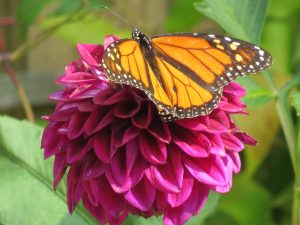
‘Tis the season to keep a sharp eye for those big, beautiful, brave but vulnerable butterflies – the monarchs.
Monarchs are important pollinators as well as indicators of the overall health of other species and their habitats, migrating thousands of miles each year over several generations and as many as 100 miles in one day as individuals. In Indigenous Mexican cultures they may symbolize the returning souls of loved ones or of warriors killed in battle as well as transformation and rebirth. Monarch Butterfly Day is celebrated annually in Pacific Grove, California (a k a “Butterfly City”), and East Chicago, Indiana, stages a Monarch’s Festival each year when the migrators are due in town.
Monarchs begin to visit Montauk in spring, when the females lay eggs exclusively on milkweed plants. Milkweeds are critical because the plants contain compounds that are toxic to potential predators.
“The larvae feed on the poisonous sap of the milkweed host, turning into large yellow and black caterpillars, which after a couple of inches or more of growth pupate into cocoons,” the late naturalist Larry Penny wrote in his “Nature Notes” column in the East Hampton Star.
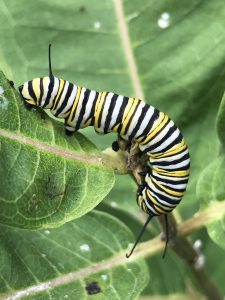
“The beautiful adult that finally emerges acts like a groggy prizefighter after a knockdown,” he wrote. “It stumbles around for quite a while, ultimately spreading its unfolding wings, pumping them, and then taking flight.”
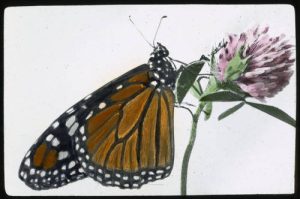
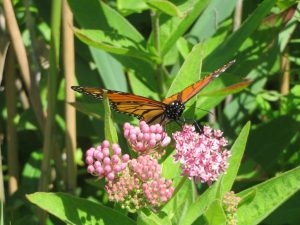
“They have to be expert fliers to handle the winds and fly all the way to Mexico,” the columnist wrote. “It would be a much more perilous journey if they didn’t have those glycosides and those distinctive orange patches separated by black lines that warn potential predators to stay away.”
Adult monarchs can also be seen in Montauk in August and September as they fuel up to head west along the ocean coast of Long Island, before they fly south. “They seem to be following the seaside goldenrods, which are a dominant ocean dune species, provider of nectar, and one of the last goldenrods to flourish in the fall.”
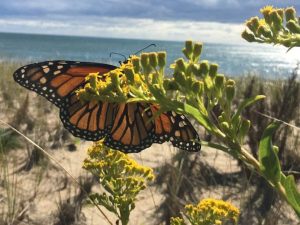
Speaking of goldenrod, the botanist Norman Taylor recorded a good number of plant species in the Solidago genus back in 1923 in The Vegetation of Montauk: A Study of Grassland and Forest. Like the marathoning monarchs, Taylor was no slouch when it came to traversing Long Island, having walked nearly 2,000 miles of it to map the locations of plants. (Irrelevant fun fact: Taylor consulted with Robert Moses on planning Long Island state parks, was instrumental in having Montauk Point declared a state park, and served as an expert witness in Moses’s acquisition of Hither Hills acreage for a state park there.)
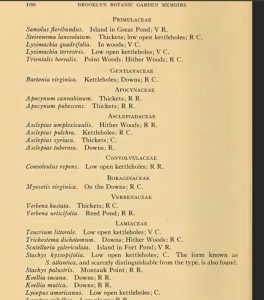
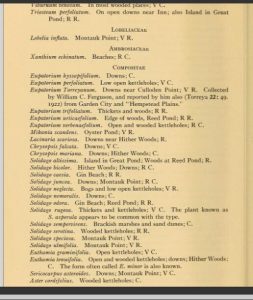
It may also be of interest to know that the Montauk Library has a Seed Library in which both milkweed and goldenrod seeds are available for planting this fall. More information about that can be found at montauklibrary.org/services/seed-bank.

Reply or Comment